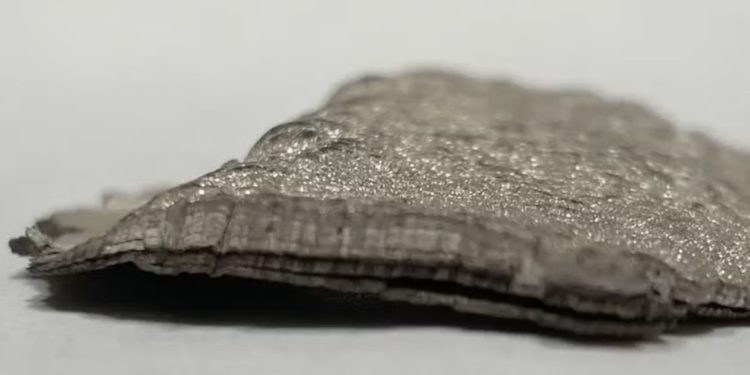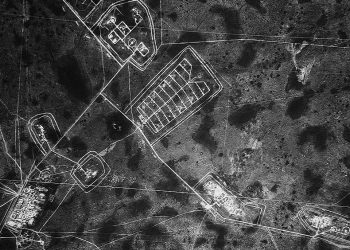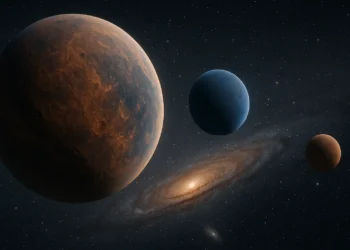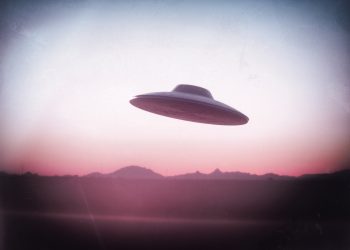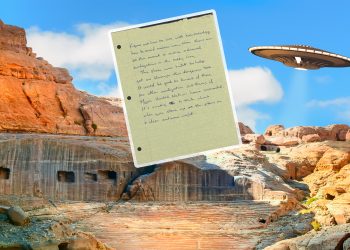Ever since humanity began contemplating life beyond Earth, we’ve been captivated by the possibility of extraterrestrial civilizations. So when an unusual metallic shard surfaced, rumored to have originated from an alien spacecraft, it sparked widespread curiosity. The mysterious fragment said to have fallen to Earth in 1947 during the infamous Roswell incident, has undergone extensive examination—leading some to believe it could be evidence of alien technology.
While the Roswell event was ultimately attributed to a U.S. Air Force balloon used to monitor Soviet nuclear activities, the debate around the true origins of this metal piece continued for decades. The sample came into the hands of UFO enthusiasts, including Tom DeLonge, former frontman of Blink-182, through his To the Stars Academy. DeLonge’s organization researches unexplained phenomena, and this particular metal shard appeared to have properties that suggested it wasn’t from our planet.
A Closer Look at the Shard: Is It Earthly or Alien?
The strange object is primarily composed of magnesium and zinc, along with small amounts of bismuth and lead. To investigate its origins, the U.S. government’s All-Domain Anomaly Resolution Office (AARO) tasked the Oak Ridge National Laboratory (ORNL) with conducting a detailed analysis. ORNL, a research institution originally established during WWII, has historically been involved in nuclear energy research, but it also has experience analyzing materials believed to be extraterrestrial.
AARO’s mission was to determine if the object was from Earth or if it could have extraterrestrial roots, specifically whether the shard could act as a terahertz waveguide—a structure that directs electromagnetic waves. This would potentially align with theories suggesting that alien technology could use advanced waveguides for purposes like levitation or propulsion. However, the findings painted a different picture.
Analysis Results
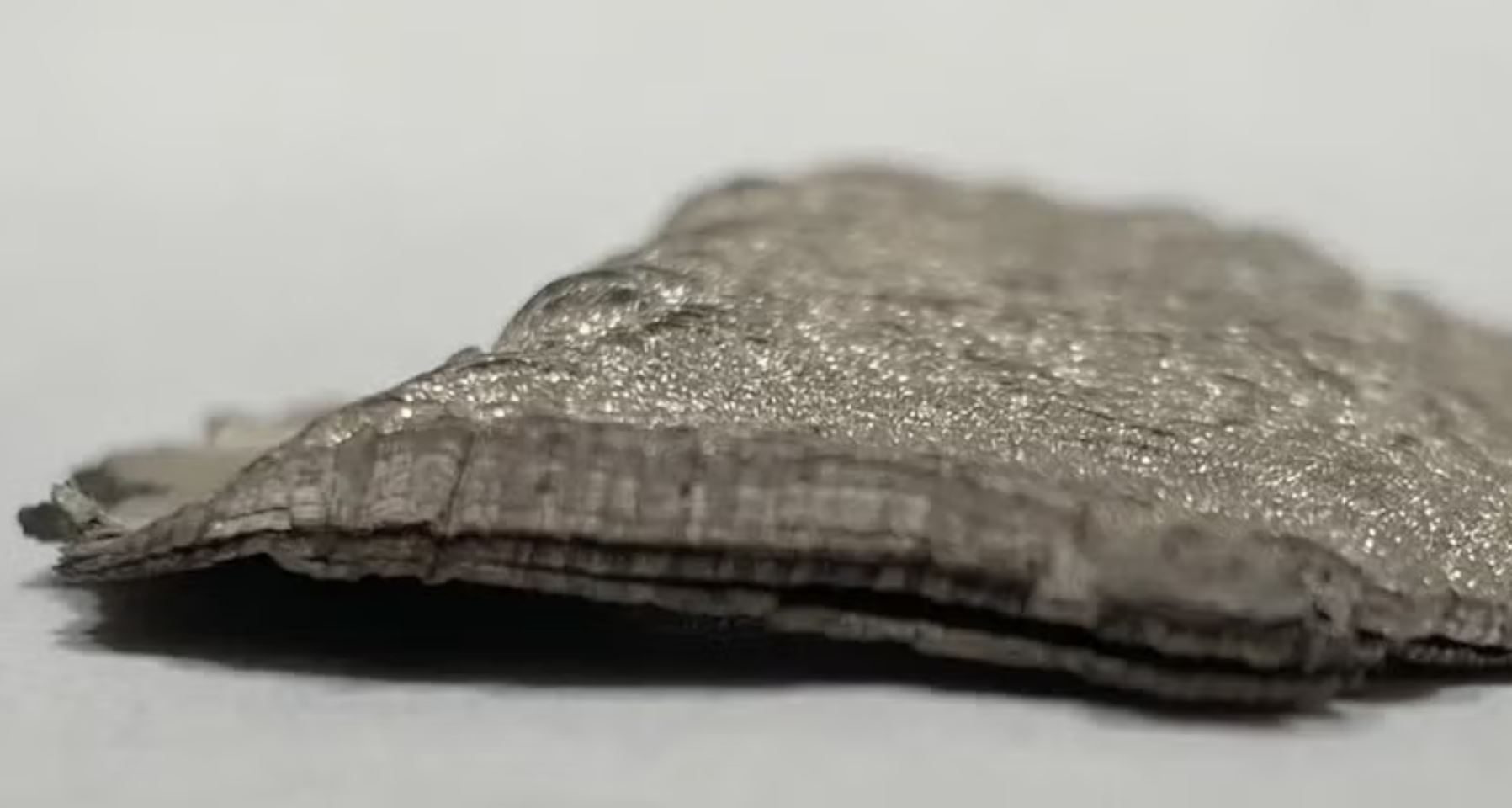
In 2022, ORNL conducted a thorough isotopic analysis of the shard. This method allowed scientists to identify the specific isotopic signatures of the metals in the alloy. By comparing the sample’s magnesium and lead isotopes with known isotopic ranges on Earth, the scientists confirmed that the metal had a terrestrial origin. The isotope ratios of magnesium, unique to Earth’s solar system, indicated that the metal likely formed within our region of space, specifically in a star-forming zone.
Further studies revealed that the shard’s structure had undergone some degree of fractionation, a process where lighter and heavier isotopes separate due to extreme heat or stress during manufacturing. However, the material remained within the range of Earth’s naturally occurring isotopic patterns, strongly suggesting that this fragment wasn’t a product of alien technology.
In fact, the shard’s chemical structure was similar to magnesium alloys commonly used during the post-WWII era. Magnesium alloys were poorly understood at the time, and the unusual mixture of elements in the shard could be the result of early research into creating stronger and lighter aircraft materials.
One of the most intriguing aspects of the analysis centered on the presence of bismuth in the shard. Bismuth is a metal known for its ability to guide terahertz waves, which are emitted by energy sources and can be used in various technologies, including communication devices. In theory, if the bismuth in the shard were pure and layered correctly, it could act as a terahertz waveguide, potentially allowing for the levitation of objects.
However, the bismuth in the shard wasn’t pure—it contained traces of lead and was layered in a way that disrupted its ability to function as a proper waveguide. This key finding reduced the likelihood that the shard was extraterrestrial in origin.
The Verdict: A Fascinating but Earthly Find
After months of speculation and analysis, ORNL concluded that the shard was likely created on Earth. According to the report, the object was “manufactured terrestrially, albeit with an uncommon mixture of elements.” Despite the unusual properties and composition, the shard does not exhibit any biosignatures or technosignatures that would suggest it was alien in origin.
To the Stars Academy has since issued a statement acknowledging the findings but also expressing their desire for further investigation. The organization pointed out that while the reports confirm the material’s terrestrial origin, some anomalies remain unexplained. As a result, they are eager to continue their research in collaboration with ORNL.
While this particular shard may not be the smoking gun for alien technology, the investigation represents a significant step forward in understanding unexplained phenomena. Every time scientists rule out terrestrial origins for strange objects, it narrows down the possibilities, bringing us closer to discovering what truly lies beyond our planet.
Speculation about alien life has long captivated our imaginations, and while this shard likely belongs to Earth, it doesn’t mean the search for extraterrestrial technology is over. As science advances, so too will our ability to investigate the mysteries of the universe with greater precision. The search continues, and with each investigation, we get one step closer to unlocking the secrets of the cosmos.
What do you think? Could future discoveries finally give us the answers we seek about extraterrestrial life?



